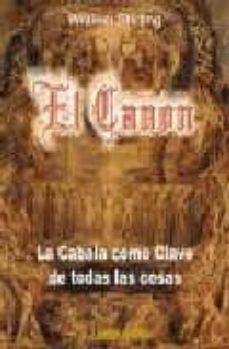Imprescindibles
Más vendidos Libros más leídos eBooks más leídos Todos los libros Todos los libros Autores destacados Series y sagas
Recomendados Libros recomendados Autores destacados Libros que inspiran Vidas con historia LGTBIQ+ English books
Ficción
Literatura Contemporánea Estudios literarios Clásicos Cuentos Poesía Teatro Libros de bolsillo Sagas literarias
Géneros literarios Novela romántica y erótica Novela negra Novela histórica Narrativa fantástica Novela de ciencia ficción Novela de terror Narrativa de humor Narrativa de viajes
No Ficción
Ciencias y tecnología Biología Ciencias Ciencias naturales Divulgación científica Informática Ingeniería Matemáticas Medicina Salud y dietas Formación Idiomas Estilo de vida Libros de Cocina Guías de viaje Narrativa de viajes Deportes Libros de Juegos Manualidades
Humanidades Autoayuda y espiritualidad Ciencias humanas Derecho Economía y Empresa Psicología y Pedagogía Filosofía Sociología Filología Biblioteconomía Estudios filológicos Estudios lingüísticos Estudios literarios Historia y crítica de la Literatura
Infantil
Juvenil
#Jóvenes lectores Narrativa juvenil Clásicos adaptados Libros Wattpad Libros Booktok Libros de influencers Libros de Youtubers Libros Spicy Juveniles Libros LGTBIQ+ Temas sociales Libros ciencia ficción Libros de acción y aventura Cómic y Manga Juvenil Cómic Juvenil Manga Shonen Manga Shojo Autores destacados Jennifer L. Armentrout Eloy Moreno Nerea Llanes Hannah Nicole Maehrer
Libros de fantasía Cozy Fantasy Dark academia Hadas y Fae Romantasy Royal Fantasy Urban Fantasy Vampiros y hombres lobo Otros Misterio y terror Cozy mistery Policiaca Spooky Terror Thriller y suspense Otros
Libros románticos y de amor Dark Romance Clean Romance Cowboy Romance Mafia y amor Romance dramatico Romance dramatico Romcom Sport Romance Otros Clichés Enemies to Lovers Friends to Lovers Hermanastros Slow Burn Fake Dating Triángulo amoroso
Cómic y Manga
Novela gráfica Novela gráfica americana Novela gráfica europea Novela gráfica de otros países Personajes, series y sagas Series y sagas Star Wars Superhéroes Cómics DC Cómics Marvel Cómics otros superhéroes Cómics Valiant
eBooks
Literatura Contemporánea Narrativa fantástica Novela de ciencia ficción Novela de terror Novela histórica Novela negra Novela romántica y erótica Juvenil Más de 13 años Más de 15 años Infantil eBooks infantiles
Humanidades Autoayuda y espiritualidad Ciencias humanas Economía y Empresa Psicología y Pedagogía Filosofía Historia Historia de España Historia Universal Arte Cine Música Historia del arte
Ciencia y tecnología Ciencias naturales Divulgación científica Medicina Salud y dietas Filología Estudios lingüísticos Estudios literarios Historia y crítica de la Literatura Estilo de vida Cocina Guías de viaje Ocio y deportes
WILLIAM STIRLING
Recibe novedades de WILLIAM STIRLING directamente en tu email
Filtros
Del 1 al 3 de 3
Good Press 4064066234638
In "New Theories in Astronomy," William Stirling presents a compelling exploration of astronomical phenomena through a rigorous yet accessible lens. This work engages with modern theories and contested ideas in the field, demonstrating StirlingAos adept integration of scientific inquiry with philosophical contemplation. The text is characterized by a clear, methodical style, supported by extensive research and an impressive use of diagrams that elucidate complex concepts, making it not just informative but also visually engaging. Stirling navigates the historical context of astronomy, juxtaposing ancient celestial models with contemporary understandings, thereby enriching the readers grasp of the disciplines evolution. William Stirling, a distinguished figure in the realm of astrophysics, draws upon his rich academic background and extensive fieldwork, which has greatly informed his perspective. His passion for bridging the gap between foundational astronomical principles and cutting-edge theories shines through in his writing. Stirlings earlier experiences working with observatories and his engagement with the scientific community have positioned him uniquely to contextualize his theories within the broader academic discourse. This book is highly recommended for anyone with a thirst for knowledge about the cosmos, from scholars to enthusiasts. StirlingAos insightful analysis invites readers to not only absorb information but to think critically about the universe and our understanding of it, making it a valuable addition to both personal libraries and academic institutions.
Ver más
eBook
Jazzybee Verlag 9783849644420
An Exposition Of The Pagan Mystery Perpetuated In The Cabala As The Rule Of All The Arts. The author of the present work argues out his case with much precision and a wealth of figures, proving most clearly that the external measurements of almost every ancient temple, the figures of the New Jerusalem, Holy Oblation, and other temples, real and imaginary, reveal the magnitudes of the sun, moon, and other planets, together with the distance of their orbits. And most ingeniously he argues that, as all these calculations were, of necessity, impossible of comprehension to the vulgar, they were typified by symbols, the principal of all these symbols being the cross. Therefore it follows, in his opinion, that the rage of the so-called Reformers of the church was not a blind unreasoning fury, blended with a dislike to beauty, but a reasoning fury against a symbol that they understood. And he remarks, when speaking of the Puritans, whom he most justly stigmatizes as both "ridiculous and ignorant," that it was curious that, having cast away the cross, they should still retain the Christ, as both are one.
Ver más
eBook
HUMANITAS 9788479103170
La Revelación de la Antigua Ley Esotérica que ha regulado desde el principio de los tiempos todos los aspectos de la actividad humana, proporcionando los patrones numéricos y matemáticos para el desarrollo de todas las ciencias y artes, como la escultura, la música, la arquitectura, la pintura, la religión, la astronomía y el arte del gobierno que según Platón, mantuvieron durante diez mil años la estabilidad en la cultura egipcia.
Ver más
Tapa blanda
Del 1 al 3 de 3


![harry potter y el cáliz de fuego (harry potter [ediciones ilustra das interactivas] 4)-j.k. rowling-9788419868497](https://imagessl7.casadellibro.com/a/l/s5/97/9788419868497.webp)


























